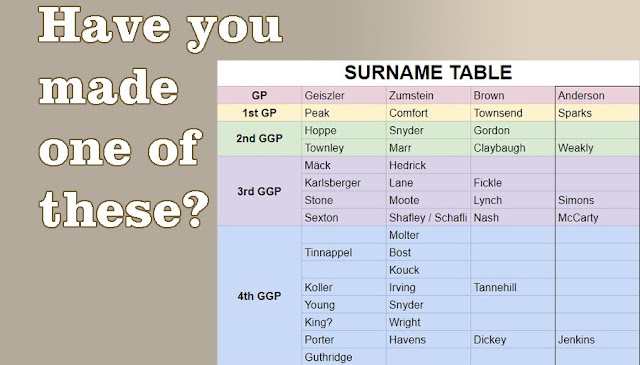How do I know if a record belongs to my ancestor?
VIEW QUESTION: "Would I be wrong to assume a record is about my ancestor if a source I find has about the same year of birth or death and same place of residence?"
The easy answer is, it depends.
For some records, you can determine if the source is indeed your ancestors because those documents have additional details that you recognize as specific to your relative. These details match more than the birth year or individual's name. Additional information:
- identifying parents you have proven
- including unusual middle names
- naming birth cities or villages, especially when they differ from current residences
- recording occupations
- noting physical descriptions
- including known siblings and additional relatives
- listing the same neighbors as in previous records
- recording officiators from the known church affiliation
- including military units that were previously recorded
- matching complete birth dates or death dates
I could go on. The trick is there needs to be more than a hunch that the records relate to your ancestor. There needs to be an accumulation of details.
In this video, I share details on how I looked for Street Morgan, the wife of Walter Morgan. I walk through the process of determining which records provide evidence of her and which records do not. Join me in this Research Over My Shoulder series on the Family History Fanatics YouTube Channel.
Watch this Research Over My Shoulder video on YouTube.
What happens when the source is light on details?
When a record has sparse information, who often have to accumulate negative evidence. In other words, research the entire recordset to rule out the possibility that the entry does not pertain to anyone else in that time and place with the same name. Be careful, this research strategy is not always foolproof.
Are there other research tips to keep in mind?
- Research a wide range of collections.
- Examine each source for connecting clues.
- Build a case for the evidence you have.
If you can't prove the connection, then ignore the source.
If you're uncertain and can't say the record matches or doesn't, then keep working on your problem from different angles until you can make a determination. Be warned, sometimes, you won't be able to answer your question.
Build A Case




Thank you for illustrating the process. I've come across too many trees with records that actually disprove the link they supposedly support because people don't evaluate appropriately.
ReplyDelete